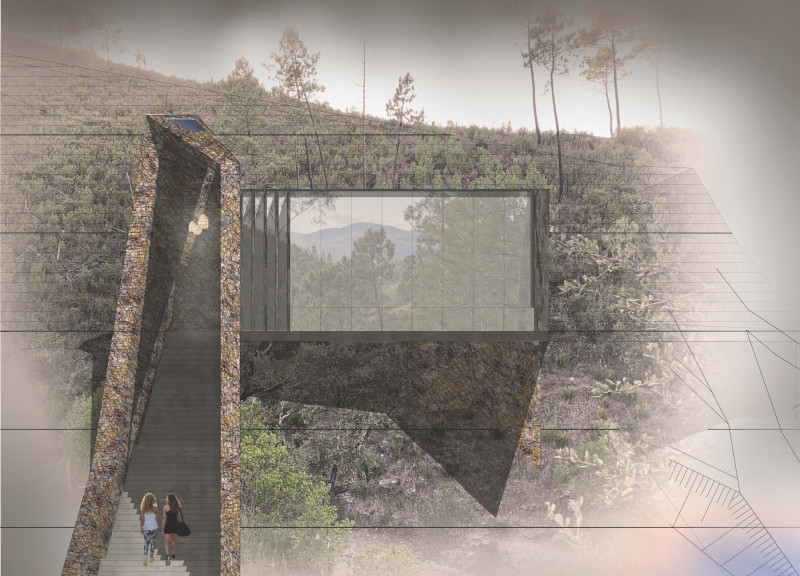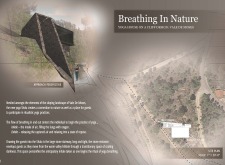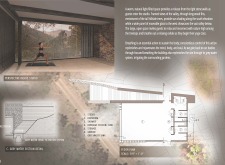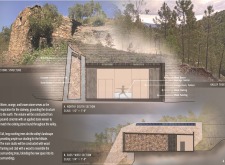5 key facts about this project
The architectural layout includes multiple zones, such as a large yoga studio, restrooms, showers, and storage facilities. These spaces are arranged to facilitate both communal activities and individual reflection, with an emphasis on comfort and accessibility. Natural light floods the interior through extensive use of glass panels, creating a harmonious connection with the external environment.
Integration of Natural Elements
One of the most noticeable features of the Yoga House is its seamless integration of natural elements. The warm-colored local stone used for the façade is carefully selected to complement the surrounding topography. Poured concrete provides structural support while maintaining aesthetic continuity through stone veneer finishes. Additionally, large moveable glass doors enhance the connection to nature, allowing users to experience views of the valley while maintaining an open, airy atmosphere inside.
Sustainability is at the forefront of the design. The inclusion of solar panels on the roof demonstrates a commitment to renewable energy, while a grey water recycling system functions to support garden irrigation. This not only minimizes ecological impact but also fosters a sustainable relationship between the building and its environment.
Functional and Sensory Design
The Yoga House features a grand stone stairway that serves as a transitional pathway from the external world to the internal sanctuary. This design choice enhances the journey to the entrance, encouraging mindfulness before entering the practice area. Inside, the yoga studio is designed to facilitate diverse yoga practices, with ample space for movement and reflection. The finishes and furnishings are chosen to enhance sensory experiences, further supporting the vital tenets of yoga.
Unique aspects of the Yoga House include its site-specific adaptation and a strong emphasis on sensory interaction. Unlike many yoga facilities, this design draws inspiration directly from the geographical context, contributing to an overall sense of place. The building's architecture emphasizes not only functionality but also psychological comfort through its visuals and materials, encouraging practitioners to immerse themselves fully in their experiences.
For a more comprehensive understanding of the architectural principles and design details of the Yoga House in Vale De Moses, readers are encouraged to explore the presentation of architectural plans, sections, and designs. This exploration will provide deeper insights into the project’s unique approaches and its contribution to wellness architecture.


























